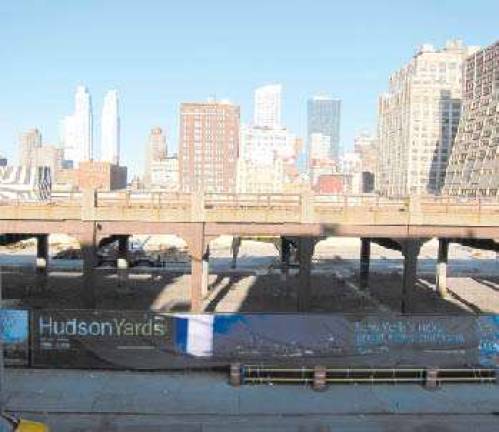Letter: Commuting By River On The West Side

After turning its back on the waterfront for nearly a century, New York City is beginning to face and embrace the rivers that built our city. Nowhere is this transformation happening faster than on Manhattan's far West Side, where Hudson Yards will employ and house tens of thousands of new workers and residents.
The city has invested $2 billion in extending the Number 7 subway line from Times Square to 11th Avenue, which will link the area to key transit hubs and 10 north/south subway lines. However, when it comes to mass transit access, more is always better.
So how do we bolster mass transit on the far West side? The answer lies on the river itself. The waterways once carried millions of people a year into New York's business districts, and we can use them again. That is why it is encouraging to see a new ferry line launching at Hudson Yards' doorstep. Starting May 19, the new Westside ferry run by New York Water Taxi will connect Hudson River Park's Pier 84 at West 44th Street to growing jobs around the World Financial Center and Battery Park City.
It is the first commuter-oriented, north-south ferry line on Manhattan's western edge, a promising addition to the small but growing ferry networks that cross the Hudson and East Rivers. And at the south end it will link to another area of rapid development in Lower Manhattan, which has six ferry terminals that now receive riders from New Jersey, Brooklyn and Staten Island.
The Hudson Yards district is New York's biggest redevelopment project since Rockefeller Center was built 80 years ago. It encompasses 60 blocks that only a few years ago were barely noticed by New Yorkers ? a landscape of rail yards, trucking terminals and warehouses, many of them abandoned. The rezoning of the area provided for a stunning transformation, with capacity for 25 million square feet of new office space, 2 million square feet of retail space, 3 million square feet of hotel space, and 20,000 housing units.
The Hudson River is the western flank of the Hudson Yards district. Thus, Hudson Yards is naturally drawn to and defined by the waterfront, and many of its projects will be integrated with the High Line and Hudson River Park. A transit option at the riverfront will be an invaluable resource for commuters and an attraction of its own for tourists.
If the Far West Side is the city's biggest canvas for waterfront development, it is hardly the only one. All along New York's 500-plus miles of shoreline, new housing is finally breaking through the highways, rail lines and disused industrial sites that for decades walled off the city from its own waterways. The same barriers choked off mass-transit arteries, leaving the waterfront largely inaccessible and discouraging housing development on what should be some of the most valuable real estate on earth.
Ferry service is one of the least expensive and most efficient means adding to the transit infrastructure for hundreds of thousands of new residents expected in the emerging waterfront neighborhoods. For many of them, ferries will be an essential and enjoyable mode of transportation.
To solve the next century's transportation needs, New York City must look to its past and embrace its greatest resource: its rivers.
Ann Weisbrod is the former president of Hudson Yards Development Corporation.